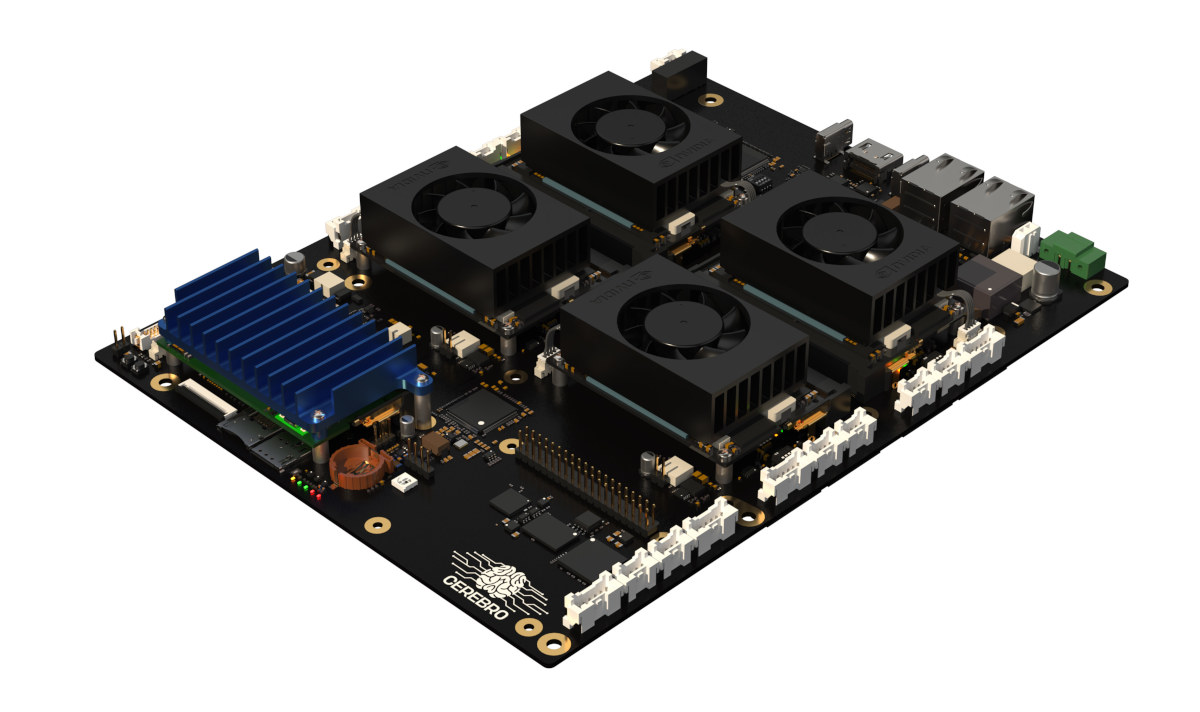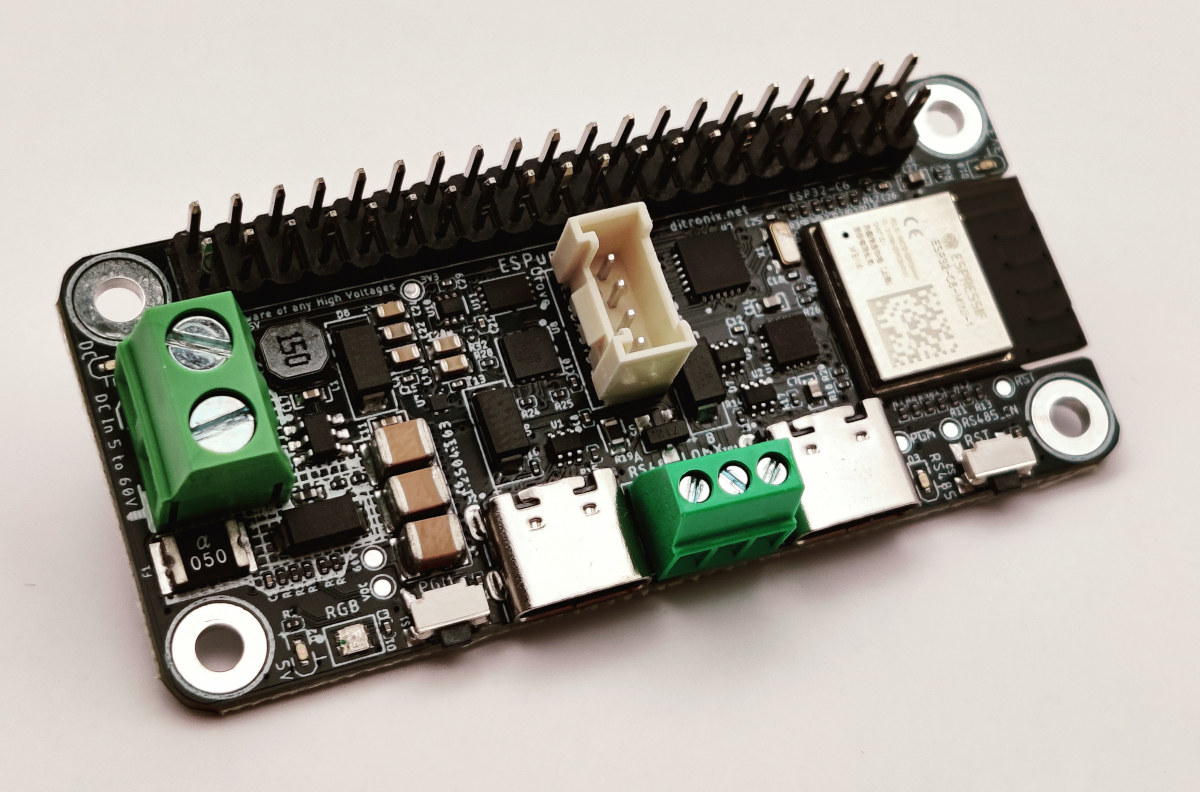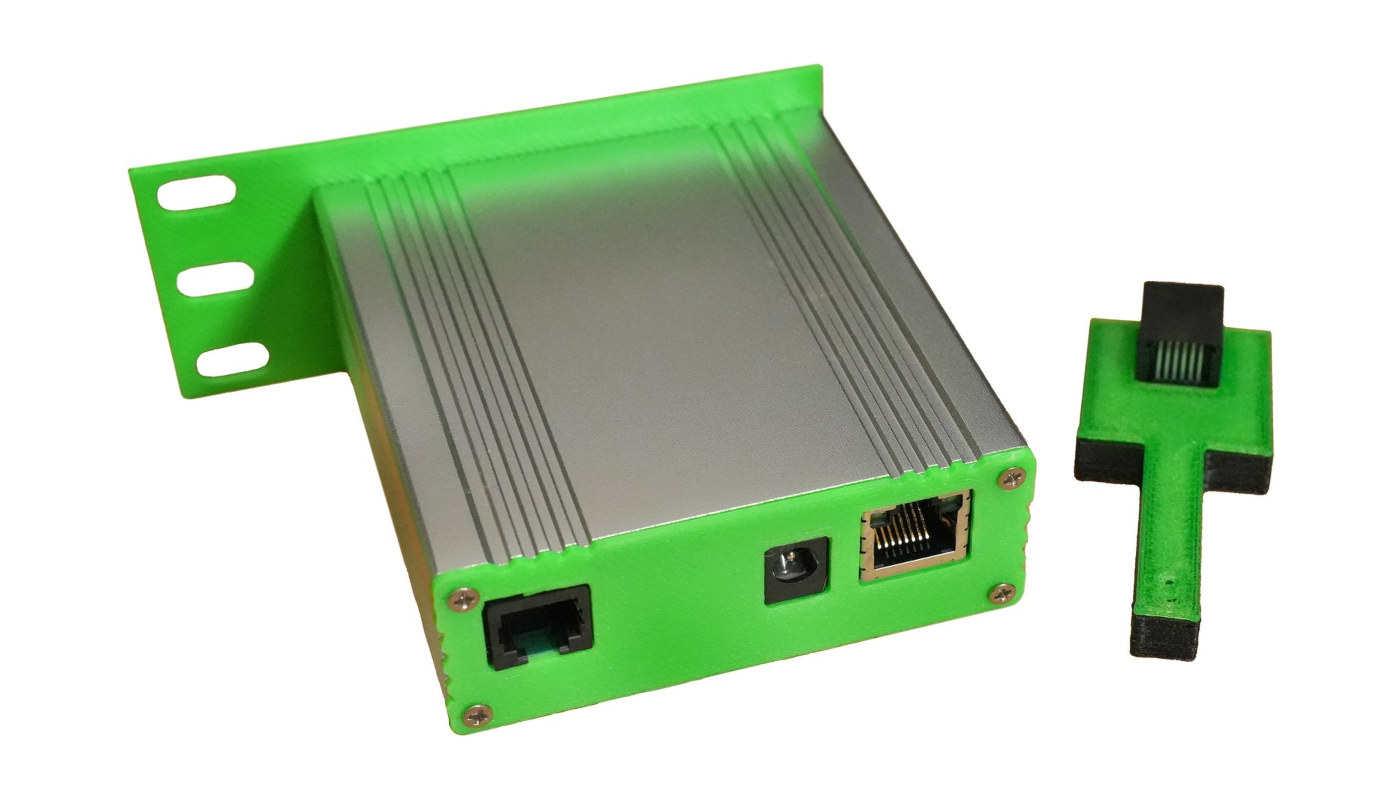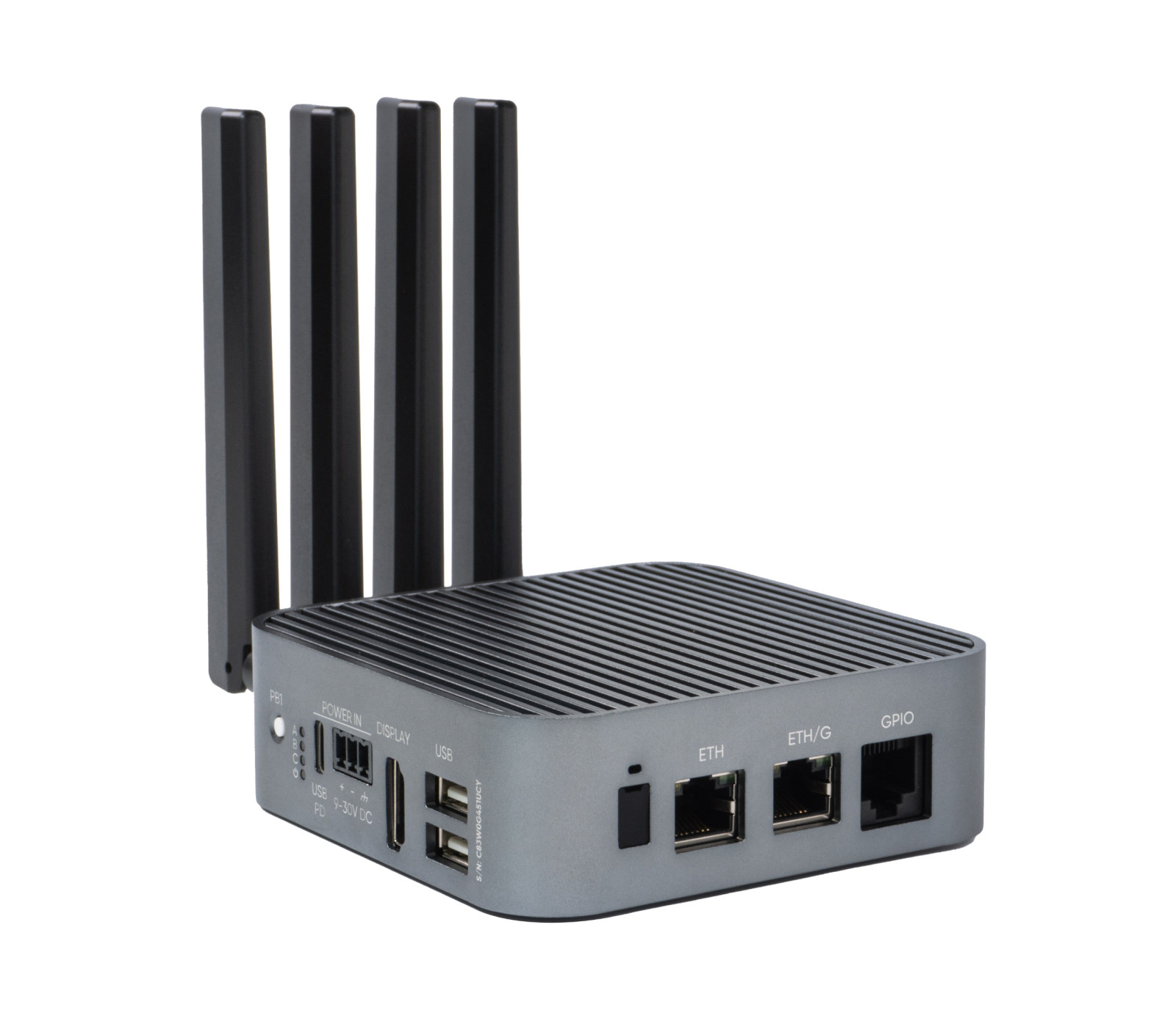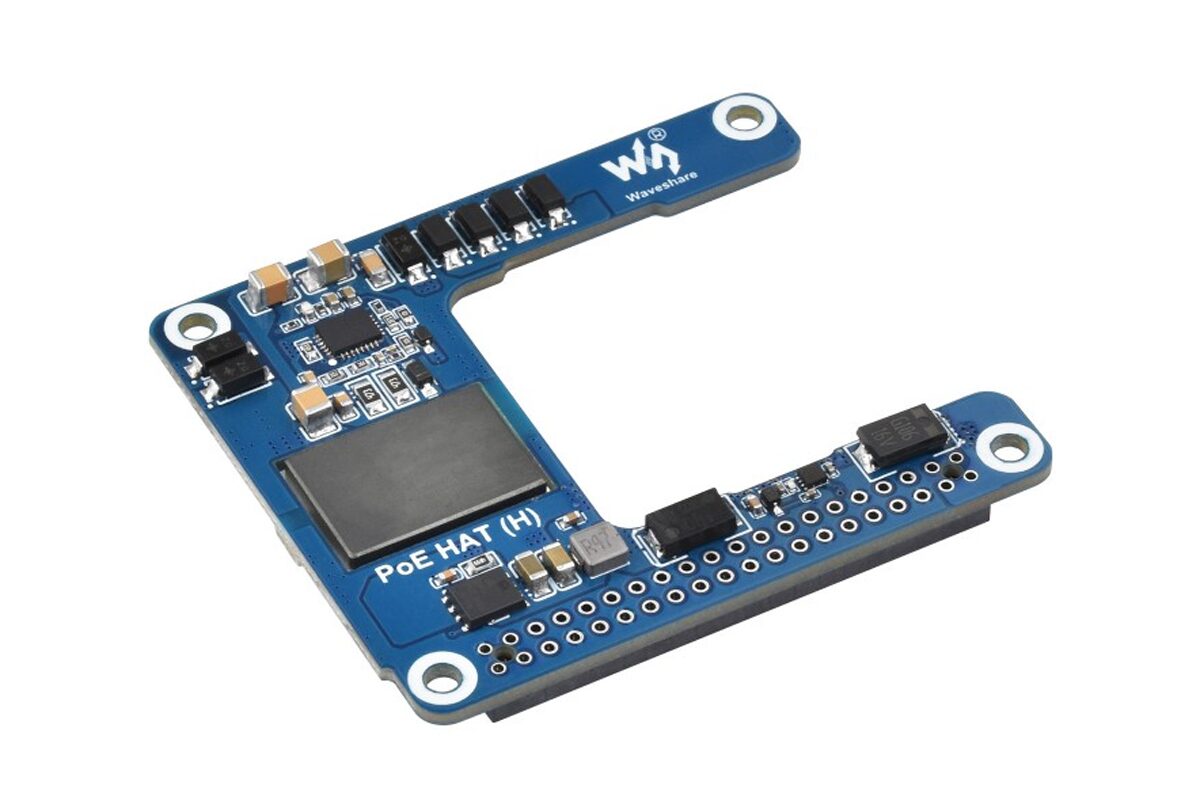Cerebro is a modular board / clusterboard designed to take up to four system-on-modules such as NVIDIA Jetson SO-DIMM modules, Raspberry Pi CM4 or CM5, or Radxa CM5. The board integrated a BMC for intercommunication between the CPU modules. The Cerebro was designed out of frustration as the team at Sparklab Solution could not find a solution where boards would work together seamlessly. While there are other clusterboards for Raspberry Pi Compute modules, the Cerebro motherboard provides more flexibility with three M.2 sockets per node, a built-in BMC and optional expandable BMC, KVM support between each node, dual Ethernet, a 10 Gbps USB 3.2 port, and more. Specifications: Compute Modules 4x SODIMM-260 slots Compatibility Nvidia Jetson Orin NX/Nano Raspberry Pi CM4/CM5 via adapter Radxa CM5 via adapter Supports mix and match of different models Storage 2x M.2 key-M slots per node (8x in total) for NVMe SSD 1x MicroSD card […]
Muse Pi Pro is a feature-packed, credit card-sized SpacemIT M1 RISC-V SBC with HDMI, GbE, 4x USB, M.2 and mPCIe sockets
Muse Pi Pro is a feature-packed, credit card-sized SBC powered by the SpacemIT M1 octa-core 64-bit RISC-V AI SoC with a 2 TOPS NPU and equipped with up to 16GB LPDDR4x and 128GB eMMC flash. The single board computer features gigabit Ethernet and a WiFi 6 + Bluetooth 5.3 module for connectivity, HDMI and MIPI DSI display interfaces, two MIPI CSI interfaces, a 3.5mm audio jack, four USB 3.0 ports, an M.2 socket for an NVMe SSD or wireless module, a mini PCIE socket for WiFi and 4G LTE/5G cellular connector, and a 40-pin GPIO header for expansion. That’s quite a lot of features for such a compact board. Muse Pi Pro specifications: SoC – SpacemiT M1 (similar to SpacemIT K1, but clocked at 1.8 GHz) CPU – 8-core X60 RISC-V processor @ 1.8 GHz GPU – Imagination IMG BXE-2-32 with support for OpenGL ES3.2, Vulkan 1.2, OpenCL 3.0; 20 […]
ESPuno Pi Zero ESP32-C6 board takes up to 60V DC input, offers RS-485 interface (Crowdfunding)
ESPuno Pi Zero is a Raspberry Pi Zero-sized board based on an ESP32-C6-MINI-1 WiFI 6, BLE, and 802.15.4 wireless module and an SMPS that allows up to 60V DC input via a 2-pin terminal block. The board also features two USB-C ports, one connected to the ESP32-C6 and the other to a CH343P USB-to-serial chip, a 40-pin GPIO header, a Grove connector, a 3-pin terminal block for RS-485, DMX, Profibus, and a few buttons and LEDs. ESPuno Pi Zero specifications: ESP32-C6-MINI-1-N4 or ESP32-C6-MINI-1U-N4 SoC – Espressif Systems ESP32-C6 single-core 32-bit RISC-V clocked up to 160 MHz 320KB ROM, 512KB SRAM, low-power RISC-V core @ up to 20 MHz CPU Single-core 32-bit RISC-V clocked up to 160 MHz Low-power RISC-V core @ up to 20 MHz Memory/Storage – 320KB ROM, 512KB SRAM Wireless – 2.4 GHz WiFi 6, Bluetooth 5.0, and 802.15.4 radio (for Thread/Zigbee) Storage – 4MB flash Antenna ESP32-C6-MINI-1-N4 […]
Raspberry Pi Pico-sized RP2350 CAN development board features a clone of the MCP2515 CAN Bus controller
Waveshare has recently launched RP2350-CAN, a Raspberry Pi RP2350-powered CAN development board with onboard XL2515 CAN Bus controller and a SIT65HVD230 CAN transceiver. The board supports the CAN V2.0B protocol at up to 1 Mbps, and the XL2515 chip appears to be a clone of the popular Microchip MCP2515 CAN controller. The board includes the same 26 multi-function GPIO pins and USB-C port as found on the Raspberry Pi Pico 2. Other features include a DC-DC buck-boost converter (MP28164), BOOT and RESET buttons, a user LED, a selectable 120Ω CAN termination resistor, and CAN screw terminals. The CAN Bus board targets automotive, industrial control, and robotics applications. Waveshare RP2350 CAN specifications: SoC – Raspberry Pi RP2350A CPU Dual-core Arm Cortex-M33 @ 150 MHz with Arm Trustzone, Secure boot OR Dual-core RISC-V Hazard3 @ 150 MHz Up to two cores can be used in any combination Memory – 520 KB on-chip SRAM […]
CM5-DUAL-ETH-MINI-BOX is a dual gigabit Ethernet router box for the Raspberry Pi CM5
Waveshare CM5-DUAL-ETH-MINI-BOX is a dual gigabit Ethernet router box designed for the Raspberry Pi CM5. It offers a familiar design with a metal enclosure that looks suspiciously similar to FriendlyELEC’s family of NanoPi routers powered by Rockchip processors, such as the NanoPi R2S Plus or NanoPi R3S. The router also features a microSD card slot to boot the OS on the Raspberry Pi CM5 Lite, a USB 3.0 Type-A port, a USB Type-C port for power and eMMC flash programming, power and boot buttons, and a 40-pin GPIO header accessible without opening the case (after lifting a cover). CM5-DUAL-ETH-MINI-BOX specifications: Supported SoMs – Raspberry Pi CM5 and CM5 Lite, and potentially compatible alternatives like the Raspberry Pi CM4, Orange Pi CM5, Radxa CM5, etc… Networking 2x Gigabit Ethernet RJ45 ports: one GbE exposed directly through the CM5 board-to-board connector, and the other via a RealTek RTL8111H PCIe controller WiFi 5 […]
Openviro Axe PoE is an RP2040-based environmental sensor for server rooms and cabinets (Crowdfunding)
Openviro Axe PoE is a rack-mountable, open-source environmental sensor designed to measure the temperature and humidity (and air pressure) in server rooms or cabinets with electrical equipment. The device is based on a Raspberry Pi RP2040 board with Ethernet connectivity housed in an aluminum enclosure and equipped with two RJ12 connectors for Bosch BME280 sensors with an accuracy of +/- 0.5°C. It provides better results than sensors placed in a machine that may be impacted by the internal components’ heat dissipation. For instance, the two sensor inputs can be used to measure the temperature and humidity of the intake and exhaust in a server rack. Openviro Axe PoE specifications: Microcontroller – Raspberry Pi RP2040 dual Arm Cortex-M0+ @133 MHz with 264 KB SRAM Storage – 16 MB flash memory Network – 10/100Mbps Ethernet RJ45 port via LAN8710Ai Expansion – 2x RJ12 connector for THP Probes Misc – 3x Buttons Power […]
ALPON X4 – A Raspberry Pi CM4 fanless Edge Computer with 4G LTE cellular connectivity
SixFab ALPON X4 is yet another fanless Raspberry Pi CM4-powered edge computer whose main selling point is built-in 4G LTE cellular connectivity with an eSIM, besides two Ethernet ports, and dual-band WiFi 5 and Bluetooth 5.0 on the system-on-module. The edge computer ships with 8GB RAM and 32GB eMMC flash by default, but another Raspberry Pi CM4 can be used upon request. Other ports include HDMI video output, two USB 2.0 ports, and an RJ11 jack for GPIO expansion. The system supports three power options: USB PD, a 9V to 30V DC input terminal block, or PoE. ALPON X4 specifications: SoM – Raspberry Pi CM4 SoC – Broadcom BCM2711 CPU – Quad-core Cortex-A72 SoC @ 1.5GHz GPU – VideoCore VI with support for OpenGL ES 3.1 and Vulkan 1.0 VPU Decode – H.265/HEVC up to 4Kp60, H.264 up to 1080p60 Encode – H.264 up to 1080p30 Memory – 8GB LPDDR4-3200 […]
Thin PoE HAT for Raspberry Pi 5 features isolated SMPS, fits inside the official case, works with the active cooler
Waveshare has launched the PoE HAT (H), a thin Power over Ethernet(PoE) HAT for the Raspberry Pi 5 that easily fits inside the official case and works with the active cooler. The HAT is specially designed for the Raspberry Pi 5 and supports IEEE 802.3af/at PoE standards. It features an isolated switched-mode power supply (SMPS) that delivers a stable 5V/5A output through the GPIO header. The board includes a standard 40-pin GPIO header and relies on a low-profile PoE IC. Waveshare PoE HAT (H) Specifications: Compatibility – Raspberry Pi 5 Expansion – 40-pin Raspberry Pi GPIO header Cooling Fits inside the official Raspberry Pi 5 case Compatible with the official active cooler Misc – Onboard original IC for stable PoE performance Power Supply IEEE 802.3af/at compliant Isolated switched-mode power supply (SMPS) PoE power input – 37V to 57V DC Output via GPIO header – 5V, 5A (max) Dimensions – 65 x 56.5 […]


